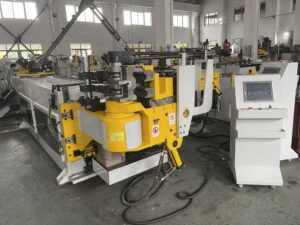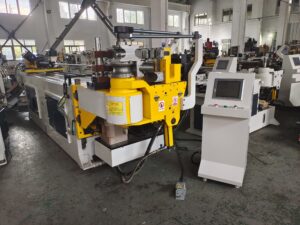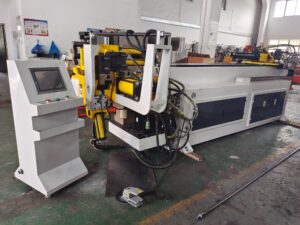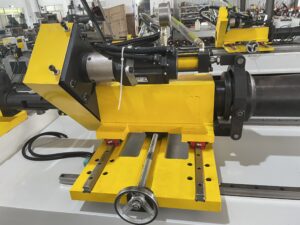How Is the Performance of DIY Pipe Bending Machine?

1. The Emergence of DIY Pipe Bending Machines
The concept of the diy pipe bending machine has evolved over the years from a simple home workshop project into an essential tool for small fabrication shops, automotive restorers, and art installations alike.
Early adopters often started with rudimentary designs and limited features; however, improvements in materials, computer-aided design (CAD) software, and CNC (Computer Numerical Control) integration have allowed today’s diy pipe bending machines to achieve a level of performance that closely rivals their commercial counterparts.
2. The Technology Behind DIY Pipe Bending Machines
At the heart of any pipe bending machine is a well-engineered mechanism designed to apply a controlled force along a predetermined bend radius. DIY enthusiasts harness both readily available tools and innovative modifications to create machines that cater to their specific needs.
Key Components and Functions
- Bending Die and Forming Tools: Central to ensuring each bend is precise, the bending die determines the curve’s radius. Many DIY models allow for interchangeable dies to suit different pipe dimensions.
- Pressurized Actuation Systems: Many machines use hydraulic or mechanical lever systems to generate the force required for bending. Hydraulic systems, though more complex to build, often yield smoother and more controlled outputs.
- Control Systems: With the integration of microcontrollers and digital machining interfaces, many modern diy pipe bending machines benefit from intermittent readouts, torque monitoring, and CNC capabilities.
- Supporting Frame and Structural Integrity: A robust frame is needed to counteract the forces generated during bending. Materials such as welded steel or reinforced aluminum ensure longevity and consistent performance.
Through an optimized blend of these components, a diy pipe bending machine can deliver excellent performance while offering customization that meets the unique demands of smaller-scale production and specialized fabrication projects.
3. Key Performance Metrics
Evaluating the performance of a diy pipe bending machine requires a well-rounded look at various metrics. Let’s explore the core indicators:
Precision and Accuracy
Precision is the capability of the machine to produce bends exactly as programmed or designed. Accuracy reflects how close the bend conforms to the intended design dimensions.
- Measurement Techniques: Modern DIY machines often integrate digital protractors or laser-guided alignment systems. Even when built from scratch, careful calibration allows these machines to achieve tolerances comparable to commercial systems.
- Implications for Design: High precision is critical for applications involving fluid conveyance, automotive frameworks, or artistic installations. Inaccurate bends can lead to leaks, structural weaknesses, or aesthetic failures.
- Challenges: Variability in manual setups, operator skill levels, and the quality of construction materials can result in minor deviations. However, dedicated monitoring and calibration protocols help mitigate these issues.
Efficiency and Speed
Efficiency is a measure of the machine’s ability to produce quality bends quickly without compromising accuracy. In a production environment or during time-sensitive projects, speed is of the essence.
- Cycle Time: The overall time taken per bend is a crucial factor, influenced by the actuation system and automation level.
- Automation vs. Manual Input: While fully automated systems are ideal, many DIY machines blend automation with manual control. This hybrid approach allows for adjustments yet requires more training and user experience.
- Energy Consumption: Efficiency also comes down to energy use. Contrasting high-powered industrial setups with DIY solutions, the latter are often designed with energy efficiency in mind, enabling longer operational hours on modest power supplies.
Durability and Reliability
The long-term performance of a diy pipe bending machine depends largely on its build quality.
- Material Fatigue: Regularly bending metals creates fatigue on the bending die and supporting structures. The selection of durable materials and periodic reconditioning is necessary to maintain performance.
- Maintenance Intervals: Wear and tear dictate how often maintenance tasks should be performed. A thorough understanding of load cycles and stress distribution can assist in predicting when parts need replacement or reinforcement.
- Cost Effectiveness: DIY solutions can strike a balance between initial setup costs and maintenance budgets, offering sustained performance without the capital-intensive price tags of commercial machinery.
Flexibility and Versatility
One of the key successes of a DIY pipe bending machine is its adaptability to various pipe sizes, materials, and bend radii.
- Adjustable Components: Many models provide modular components that can be adjusted to cater to a range of pipe diameters and materials. This feature is invaluable in prototyping and experimental projects.
- Multi-Functional Design: The machine’s ability to switch between different bending profiles indicates a high level of versatility. Designers can tailor the system for everything from gentle curves in ornamental piping to sharp angles required in structural supports.
- User Customization: The DIY spirit encourages designers to modify their machines to suit evolving needs, whether by integrating new sensors, adopting CNC controls, or re-engineering the bending mechanism for improved performance.
4. Case Study: Transforming a Small Workshop with a DIY Pipe Bending Machine
Background
In a bustling mid-sized workshop located in the industrial heartland of a metropolitan area, a team of experienced metalworkers faced challenges in meeting rapid prototyping demands for custom piping solutions. High costs for commercial pipe bending machines and long lead times on orders forced them to consider a DIY alternative.
The Challenge
The workshop required a machine capable of handling:
- Variable pipe diameters ranging from 10 mm to 60 mm.
- Bending angles from subtle curves used in artistic installations to robust right-angle bends in structural components.
- High repetition rates without sacrificing precision.
Implementation
Using readily available components and online blueprints, the lead engineer designed a diy pipe bending machine that integrated:
- A robust hydraulic actuation system paired with a digitally controlled torque sensor.
- Modular bending dies that could be swapped out quickly to accommodate different radii.
- A user-friendly interface leveraging an open-source control platform that allowed real-time monitoring and error alerts.
The team devoted an initial two months to prototyping and iterative testing, refining the mechanics and calibrating the precision sensors using simulation software. During the iterative process, they learned that:
- Upgrading hydraulic lines and incorporating reinforced joints significantly improved consistency.
- Employing a closed-loop decimal adjustment on the control software helped minimize overshooting during rapid bends.
- Custom training sessions reduced operator-induced variability, leading to repeatable performance that matched industry tolerances.
Results and Impact
After the implementation, the workshop observed a dramatic transformation in production:
- Increased Throughput: The machine was capable of producing 30% more pipes per day compared to previous manual methods.
- Enhanced Accuracy: Quality tests indicated that precision deviations were reduced by nearly 40% due to the optimized sensor-feedback loop.
- Cost Savings: The initial investment was recouped within six months thanks to reduced labor costs and minimal downtime.
- Operator Satisfaction: Enhanced training and a more intuitive control system boosted morale among the shop’s technicians.
This case study not only underscores the technical feasibility of a DIY solution but also highlights how innovative engineering and iterative customization can turn a small workshop into a high-efficiency production hub.
For more information, please click here



